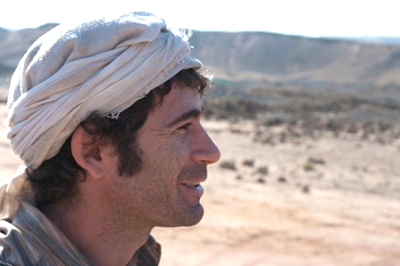Calit2 Collaborator Gets Faculty Position at Tel Aviv University
Erez Ben-Yosef to Lead CISA3 Field Research in Cyprus This Summer
San Diego, July 5, 2011 -- Erez Ben-Yosef, a collaborator and co-author on multiple research papers with Tom Levy of Calit2’s Center of Interdisciplinary Science for Art, Architecture and Archaeology (CISA3), received his Ph.D. in December, then became a postdoctoral researcher at the Scripps Institution of Oceanography. Now Ben-Yosef has landed a tenure-track faculty position at Tel Aviv University, where he will become a member of the university’s Institute of Archaeology this fall.
|
As a professor at Tel Aviv University, Ben-Yosef will continue to focus on archaeometallurgy, ancient technologies and society.
His doctoral dissertation was on “Technology and Social Progress: Oscillations in Iron Age Copper Production and Power in Southern Jordan.”
Geomagnetic Field Study in Cyprus
Before moving to Tel Aviv, Ben-Yosef is co-directing an ancient metallurgy project this summer in Cyprus with CISA3’s Levy and Lisa Tauxe of the Scripps Institution of Oceanography. They will collaborate with professor Lina Kassianidou of the University of Cyprus.
Levy and Tauxe were recently awarded an NSF Collaborative Research grant (Geology and Archaeology) to delve further into the “Levantine geomagnetic field spike: How high, how fast, how far?” The grant will help fund the field research in Cyprus from August 24 to September 10.
|
Previously, the UCSD team documented the highest peak in the geomagnetic field, dating to around 1000 BCE (three thousand years ago) in southern Jordan and Israel. They now want to see if this occurred across the Mediterranean, so they will explore the ancient mining complex at Skouriotissa in Cyprus, northwest of Nicosia. Their collaborator, Prof. Kassianidou, is in the Department of History and Archaeology at the University of Cyprus.
Incoming graduate student Ashley Richter will carry out the LiDAR survey for the project as part of her studies. She is the recipient of a San Diego Fellowship, to take part in the NSF IGERT-funded program in CISA3 to train grad students in cultural heritage diagnostics.
After the Cyprus field work, Ben-Yosef will assume his new position at Tel Aviv University, and CISA3’s Tom Levy will head for southern Jordan, for the 2011 dig season at Khirbat en-Nahas, which will include IGERT-funded graduate students as well as other graduate and undergraduate students enrolled in Levy’s field research courses.
During a previous dig season in Jordan, UCSD’s Levy, Ben-Yosef and Tauxe collected slag deposit samples from the ancient copper mining site at Khirbat en-Nahas, on which the team was able to determine a geomagnetic intensity spike. That interdisciplinary study combining geophysics and archaeology uncovered new details of Earth’s magnetic field strength during the early Iron Age, from the 12th to the 9th centuries BCE. Their results suggested that the current weakening of the geomagnetic field’s strength is modest compared with historic fluctuations – and may be part of ordinary fluctuations in the geomagnetic field that has been weakening since 1845.
Related Links
Media Contacts
Doug Ramsey, 858-822-5825, dramsey@ucsd.edu


